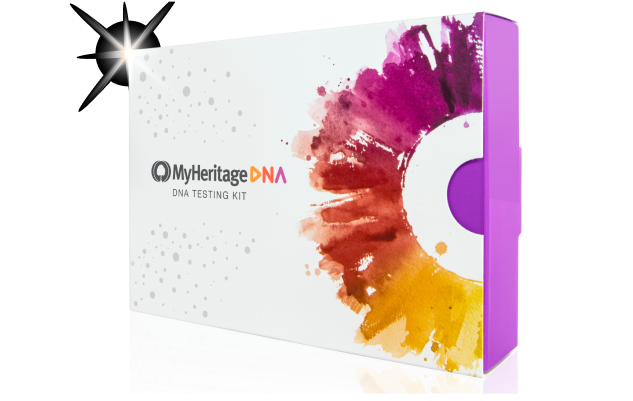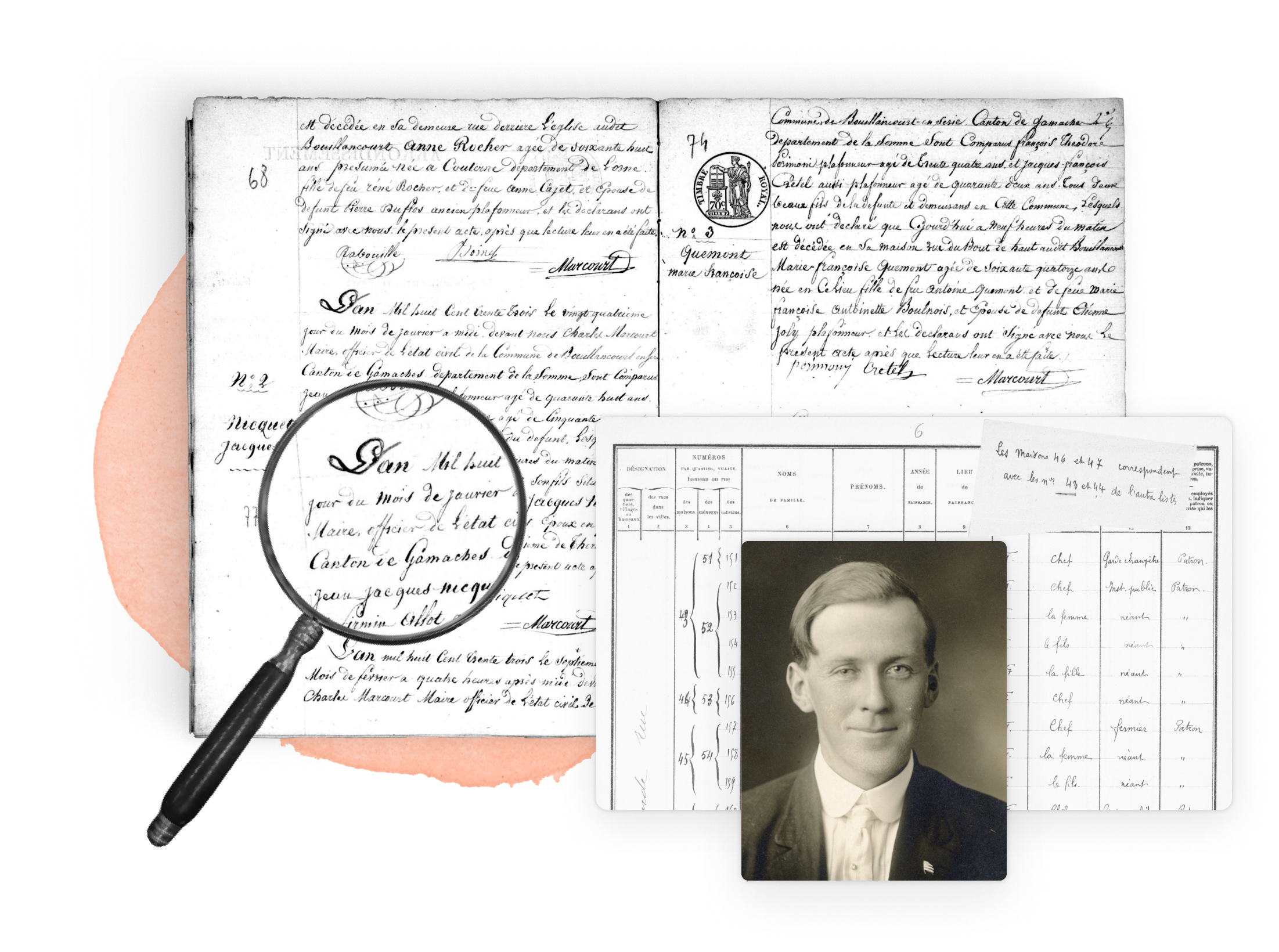Philadelphia was established in 1682 by the Quaker William Penn as the capital city of the colonial Province of Pennsylvania. At least in theory, religious tolerance was a value of the Province of Pennsylvania from the very beginning; as a result, a variety of traditions flourished in the young city from its earliest days.[1]
Research your ancestors on MyHeritage
Historic Philadelphia Congregations
Thirteen important congregations (including two Jewish synagogues) were founded in the city prior to 1800.[2] They include:
- Society of Friends Meeting [Quaker] - founded 1683
- Christ Church [Episcopalian] - founded 1695
- First Presbyterian Church - founded 1698
- Gloria Dei [Lutheran], aka "Old Swedes" - founded 1698
- St. Joseph Roman Catholic Church - founded 1733
- Congregation Mikveh Israel [Jewish] - founded 1740s
- First Moravian Church - founded 1742
- Second Presbyterian Church - founded 1743
- First Baptist Church - founded 1746
- St. Peter Episcopal Church - founded 1758
- Third Presbyterian Church, aka "Old Pine" - founded 1768
- St. Thomas African Episcopal Church - founded 1792
- Bethel African Methodist Episcopal (A.M.E.) Church - founded 1794
- Congregation Rodeph Shalom [Jewish] - founded 1795
(Note: the founding dates here represent the first evidence of a congregation and its activities—not necessarily the date when the congregation had its first official building.)

In the 300-plus years since Philadelphia’s founding, hundreds of other religious groups have come and gone in the city. The earliest churches are a reflection of the largest non-indigenous groups who first lived in southeast Pennsylvania--primarily the British, Germans, and Swedes, as well as Africans forcibly imported as slaves. However, Philadelphia's prominence as a port of immigration meant that many new churches would form over the generations, and some of the existing denominations would come to be associated with certain ethnic groups.
For example, while eighteenth-century Philadelphia Catholics were heavily French or French Caribbean,[3] Philadelphia Catholicism is perhaps more often associated today with the city's strong Irish, Polish, Italian, and Puerto Rican communities. Most of these groups arrived in largest numbers after the colonial period.
Accessing Church Records
There is no one central repository that holds all of Philadelphia’s many religious records from the 1600s the present. Some records can be found online at major genealogy websites, while others are in archives or even still solely within the holdings of the church itself. Still, because of the value of these records to genealogists and historians, there are a number of resources available to assist researchers in finding them.
The Roman Catholic parish records for the Archdiocese of Philadelphia are online at FindMyPast.com, covering a period through the early 1920s for most parishes. For a full list of the parish records digitized at FindMyPast, see: https://www.findmypast.com/articles/world-records/full-list-of-united-states-records/birth-marriage-and-death/archdiocese-of-philadelphia-sacramental-registers-parish-list. Archdiocesan newspapers dating back to 1833 are also part of the collections at FindMyPast. For records after the 1920s, contact the Catholic Historical Research Center of the Archdiocese of Philadelphia, which holds the original records. Privacy restrictions may apply.
The Philadelphia Congregations Early Records website holds records for most of the earliest congregations of all denominations, digitized and hosted online for free thanks to generous grants and the labor of the Christ Church Preservation Trust. These digital collections include baptisms and other individual rites but also the records of church leadership and administration.
A collection of records from over 1,100 churches in Pennsylvania, along with select entries from neighboring states like New Jersey, Delaware, Virginia, and Maryland, has been sourced from the archives of the Historical Society of Pennsylvania.
Records for Congregation Rodeph Shalom are held at the Jacob Rader Marcus Center of the American Jewish Archives in Cincinnati, Ohio. (Some of those records are on microfilm at the Historical Society of Pennsylvania, but not all.)
Other religious repositories in Philadelphia worth exploring include the Presbyterian Historical Society and the Lutheran Archives Center (ELCA).
Why Church Records Matter
Church records document the performance of rites such as baptism, marriage, burial, and communion. The contents of a church's records will vary depending on the time period and denomination, as well as by the religion's theology (not all Christian denominations practice infant baptism, for example). In general, however, church records are valuable to genealogists for their tendency to contain information regarding an individual's date of birth/christening or marriage and the names of parents and sponsors or witnesses who may also be family. At times, church records can also identify immigrant hometowns. They can also provide clues as to the locations and makeup of historic ethnic neighborhoods and to changing demographics over time.
Church records are especially critical sources prior to the start of government vital recordkeeping, as they are often some of the only sources prior to the late nineteenth century that provide such detailed and direct information about vital dates and family relationships. For example, the city of Philadelphia's did not begin keeping government marriage records until 1860.[4] Prior to that date, the church records are the most likely place to find record of a wedding.
Tips For Using Church Records
- Depending on the time period and denomination, a church's records may be in a language other than English. It is common to see Latin in Catholic records, while ethnic congregations' records may use the primary language of its parishioners, as with German Lutherans.
- A christening date is not always the date a child was born. While it was common in many Christian denominations to baptize a child within the first days or weeks of its life, this was not the case universally. Some baptismal records will give both a birth and a baptismal date, or at least an indication of the child's age. In some families, multiple children were christened together on the same day regardless of their age.
- If you're not sure what church your ancestor attended, look for clues in his or her obituary or the cemetery where they were buried. Old maps, too, can indicate what churches existed in the area where your ancestor lived.
Explore more about Philadelphia church records
- Record of the Inscriptions On the Tablets And Gravestones in the Burial-Grounds of Christ Church, Philadelphia record collection at MyHeritage
- Inscriptions in St. Peter's Church Yard, Philadelphia (1879) record collection at MyHeritage
- Record of Pennsylvania Marriages Prior To 1810 record collection at MyHeritage
- Researching Your Ancestors in the City of Philadelphia webinar at Legacy Family Tree Webinars
References
- ↑ Frederick B. Tolles, "William Penn," Encyclopedia Britannica. [1]
- ↑ "The Colonial Churches of Philadelphia," Secrets of Philadelphia blog, 7 December 2018, [2]
- ↑ Catherine A. Hebert, "The French Element in Pennsylvania in the 1790s: The Francophone Immigrants' Impact," Pennsylvania Magazine of History and Biography 108 (October 1984), pp. 451-469, [3]
- ↑ Philadelphia City Archives, "Get archival birth, death, and marriage records." [4]


